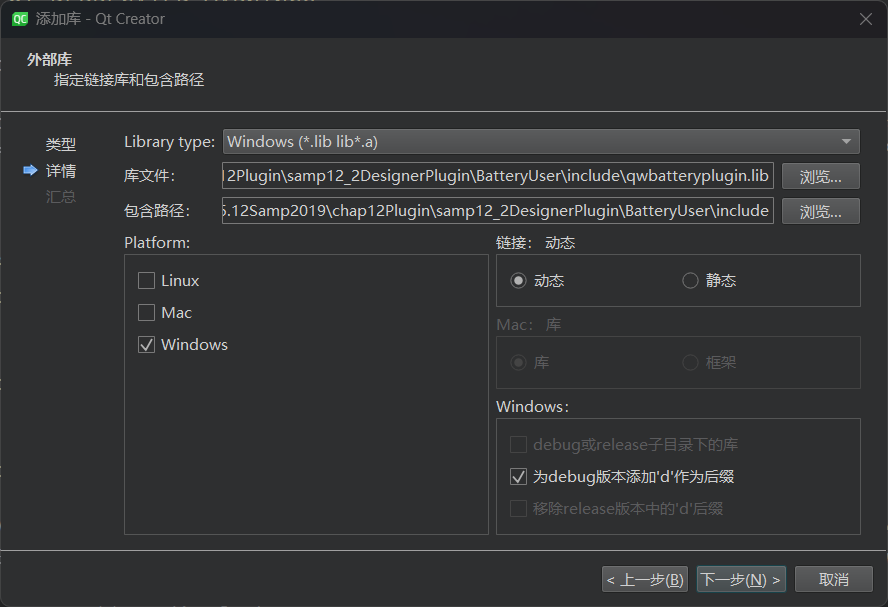目录
0.前言
1.哈希表(HashTable)设计
1.1设计思想
1.2 HashTable.h
1.3设计思路
2.unordered_map封装
2.1 UnorderedMap.h
2.2代码解释
2.3测试函数
3.unordered_set封装
3.1 UnorderedSet.h
3.2代码解释
3.3测试函数
4.结语

(图像由AI生成)
0.前言
在C++标准库中,unordered_map和unordered_set是两个常用的关联容器,它们分别用于存储键值对和唯一值。它们的底层实现基于哈希表,能够提供高效的插入、查找和删除操作。本文将详细介绍如何使用C++实现unordered_map和unordered_set,并展示其具体实现代码。
1.哈希表(HashTable)设计
哈希表是实现unordered_map和unordered_set的基础。在本设计中,我们使用拉链法(链地址法)解决哈希冲突。拉链法通过在每个哈希桶中存储一个链表,使得每个桶可以包含多个具有相同哈希值的元素。
1.1设计思想
- 哈希函数:我们定义了一个通用的哈希函数模板,并对字符串类型进行了特化处理。哈希函数的作用是将关键码转换为哈希值。
- 哈希节点:每个哈希节点存储一个元素,并包含指向下一个节点的指针。
- 哈希表结构:哈希表由一个指针数组和链表组成,每个指针指向一个哈希桶。
- 迭代器:为了遍历哈希表,我们定义了迭代器,支持哈希表的遍历操作。
- 基本操作:插入、查找和删除操作通过哈希函数确定元素的存储位置,并在相应的链表中进行操作。
1.2 HashTable.h
#pragma once
#include <vector>
#include <string>
#include <utility>
using namespace std;
// 哈希函数模板
template<class K>
struct HashFunc {
size_t operator()(const K& key) {
return (size_t)key;
}
};
// 特化字符串哈希函数
template<>
struct HashFunc<string> {
size_t operator()(const string& key) {
size_t hash = 0;
for (auto e : key) {
hash *= 31;
hash += e;
}
return hash;
}
};
namespace hash_bucket {
// 哈希节点结构
template<class T>
struct HashNode {
T _data;
HashNode<T>* _next;
// 构造函数
HashNode(const T& data)
: _data(data), _next(nullptr) {}
};
// 前置声明
template<class K, class T, class KeyOfT, class Hash>
class HashTable;
// 哈希表迭代器
template<class K, class T, class Ptr, class Ref, class KeyOfT, class Hash>
struct HTIterator {
typedef HashNode<T> Node;
typedef HTIterator<K, T, Ptr, Ref, KeyOfT, Hash> Self;
Node* _node; // 当前节点
const HashTable<K, T, KeyOfT, Hash>* _pht; // 哈希表指针
// 构造函数
HTIterator(Node* node, const HashTable<K, T, KeyOfT, Hash>* pht)
: _node(node), _pht(pht) {}
// 重载*运算符
Ref operator*() {
return _node->_data;
}
// 重载->运算符
Ptr operator->() {
return &_node->_data;
}
// 重载!=运算符
bool operator!=(const Self& s) {
return _node != s._node;
}
// 重载++运算符(前置)
Self& operator++() {
if (_node->_next) {
_node = _node->_next;
} else {
KeyOfT kot;
Hash hs;
size_t hashi = hs(kot(_node->_data)) % _pht->_tables.size();
++hashi;
while (hashi < _pht->_tables.size()) {
if (_pht->_tables[hashi]) {
break;
}
++hashi;
}
if (hashi == _pht->_tables.size()) {
_node = nullptr; // end()
} else {
_node = _pht->_tables[hashi];
}
}
return *this;
}
};
// 哈希表类
template<class K, class T, class KeyOfT, class Hash>
class HashTable {
// 友元声明
template<class K, class T, class Ptr, class Ref, class KeyOfT, class Hash>
friend struct HTIterator;
typedef HashNode<T> Node;
public:
typedef HTIterator<K, T, T*, T&, KeyOfT, Hash> Iterator;
typedef HTIterator<K, T, const T*, const T&, KeyOfT, Hash> ConstIterator;
// 开始迭代器
Iterator Begin() {
if (_n == 0)
return End();
for (size_t i = 0; i < _tables.size(); i++) {
Node* cur = _tables[i];
if (cur) {
return Iterator(cur, this);
}
}
return End();
}
// 结束迭代器
Iterator End() {
return Iterator(nullptr, this);
}
// 常量开始迭代器
ConstIterator Begin() const {
if (_n == 0)
return End();
for (size_t i = 0; i < _tables.size(); i++) {
Node* cur = _tables[i];
if (cur) {
return ConstIterator(cur, this);
}
}
return End();
}
// 常量结束迭代器
ConstIterator End() const {
return ConstIterator(nullptr, this);
}
// 构造函数
HashTable() {
_tables.resize(10, nullptr);
}
// 析构函数
~HashTable() {
for (size_t i = 0; i < _tables.size(); i++) {
Node* cur = _tables[i];
while (cur) {
Node* next = cur->_next;
delete cur;
cur = next;
}
_tables[i] = nullptr;
}
}
// 插入元素
pair<Iterator, bool> Insert(const T& data) {
KeyOfT kot;
Iterator it = Find(kot(data));
if (it != End())
return make_pair(it, false);
Hash hs;
size_t hashi = hs(kot(data)) % _tables.size();
if (_n == _tables.size()) {
vector<Node*> newtables(_tables.size() * 2, nullptr);
for (size_t i = 0; i < _tables.size(); i++) {
Node* cur = _tables[i];
while (cur) {
Node* next = cur->_next;
size_t hashi = hs(kot(cur->_data)) % newtables.size();
cur->_next = newtables[hashi];
newtables[hashi] = cur;
cur = next;
}
_tables[i] = nullptr;
}
_tables.swap(newtables);
}
Node* newnode = new Node(data);
newnode->_next = _tables[hashi];
_tables[hashi] = newnode;
++_n;
return make_pair(Iterator(newnode, this), true);
}
// 查找元素
Iterator Find(const K& key) {
KeyOfT kot;
Hash hs;
size_t hashi = hs(key) % _tables.size();
Node* cur = _tables[hashi];
while (cur) {
if (kot(cur->_data) == key) {
return Iterator(cur, this);
}
cur = cur->_next;
}
return End();
}
// 删除元素
bool Erase(const K& key) {
KeyOfT kot;
Hash hs;
size_t hashi = hs(key) % _tables.size();
Node* prev = nullptr;
Node* cur = _tables[hashi];
while (cur) {
if (kot(cur->_data) == key) {
if (prev == nullptr) {
_tables[hashi] = cur->_next;
} else {
prev->_next = cur->_next;
}
delete cur;
--_n;
return true;
}
prev = cur;
cur = cur->_next;
}
return false;
}
private:
vector<Node*> _tables; // 哈希表桶数组
size_t _n = 0; // 表中存储的数据个数
};
}
1.3设计思路
- 哈希函数:通用的哈希函数模板和针对字符串类型的特化版本,确保不同类型的数据都能正确计算哈希值。
- 哈希节点:每个哈希节点存储一个数据元素,并且包含指向下一个节点的指针,用于链表结构。
- 哈希表类:哈希表类包含一个指针数组,每个指针指向一个哈希桶。哈希表支持插入、查找和删除操作。
- 迭代器:哈希表迭代器支持对哈希表的遍历操作,通过重载运算符实现。
2.unordered_map封装
unordered_map是一个基于哈希表实现的键值对容器。我们将使用前面设计的HashTable类来实现unordered_map。unordered_map提供了高效的插入、查找和删除操作,适用于需要快速查找的场景。
2.1 UnorderedMap.h
#pragma once
#include "HashTable.h"
namespace wxk {
// unordered_map类模板
template<class K, class V, class Hash = HashFunc<K>>
class unordered_map {
// 定义一个提取键的仿函数
struct MapKeyOfT {
const K& operator()(const pair<K, V>& kv) {
return kv.first;
}
};
public:
// 定义迭代器类型
typedef typename hash_bucket::HashTable<K, pair<const K, V>, MapKeyOfT, Hash>::Iterator iterator;
typedef typename hash_bucket::HashTable<K, pair<const K, V>, MapKeyOfT, Hash>::ConstIterator const_iterator;
// 返回指向容器第一个元素的迭代器
iterator begin() {
return _ht.Begin();
}
// 返回指向容器末尾的迭代器
iterator end() {
return _ht.End();
}
// 返回指向容器第一个元素的常量迭代器
const_iterator begin() const {
return _ht.Begin();
}
// 返回指向容器末尾的常量迭代器
const_iterator end() const {
return _ht.End();
}
// 插入键值对
pair<iterator, bool> insert(const pair<K, V>& kv) {
return _ht.Insert(kv);
}
// 重载[]操作符,访问或插入元素
V& operator[](const K& key) {
pair<iterator, bool> ret = _ht.Insert(make_pair(key, V()));
return ret.first->second;
}
// 查找元素
iterator Find(const K& key) {
return _ht.Find(key);
}
// 删除元素
bool Erase(const K& key) {
return _ht.Erase(key);
}
private:
// 使用哈希表来存储键值对
hash_bucket::HashTable<K, pair<const K, V>, MapKeyOfT, Hash> _ht;
};
// 测试unordered_map
void test_map() {
unordered_map<int, string> dict;
// 插入键值对
dict.insert({1, "one"});
dict.insert({2, "two"});
dict.insert({3, "three"});
dict.insert({4, "four"});
dict.insert({5, "five"});
// 使用[]操作符访问和修改元素
dict[2] = "TWO";
dict[6] = "six"; // 插入新的键值对
// 查找元素
auto it = dict.Find(3);
if (it != dict.end()) {
cout << "Found: " << it->first << " -> " << it->second << endl;
} else {
cout << "Not Found: 3" << endl;
}
// 删除元素
bool erased = dict.Erase(4);
cout << "Element with key 4 " << (erased ? "was erased." : "not found.") << endl;
// 遍历unordered_map
cout << "Contents of the unordered_map:" << endl;
for (auto it = dict.begin(); it != dict.end(); ++it) {
cout << it->first << " -> " << it->second << endl;
}
cout << endl;
}
}
2.2代码解释
- MapKeyOfT仿函数:用于提取键值对中的键,
operator()返回键值对的第一个元素,即键。 - 类型定义:定义了
iterator和const_iterator,分别用于遍历和访问unordered_map中的元素。 - begin() 和 end():返回指向容器第一个元素和末尾的迭代器,支持常量版本。
- insert():插入键值对,使用哈希表的
Insert方法。 - operator[]:重载
[]操作符,用于访问或插入元素。如果键不存在,则插入默认值。 - Find():查找指定键的元素,返回指向该元素的迭代器。
- Erase():删除指定键的元素,返回操作是否成功的布尔值。
- 私有成员变量:使用哈希表
HashTable存储键值对。
2.3测试函数
- test_map():测试
unordered_map的插入、删除、访问和遍历功能,展示了如何使用该容器进行基本操作。
输出结果:
Found: 3 -> three
Element with key 4 was erased.
Contents of the unordered_map:
1 -> one
2 -> TWO
3 -> three
5 -> five
6 -> six
3.unordered_set封装
unordered_set是一个基于哈希表实现的唯一值容器。我们将使用前面设计的HashTable类来实现unordered_set。unordered_set提供了高效的插入、查找和删除操作,适用于需要快速查找唯一元素的场景。
3.1 UnorderedSet.h
#pragma once
#include "HashTable.h"
namespace wxk {
// unordered_set类模板
template<class K, class Hash = HashFunc<K>>
class unordered_set {
// 定义一个提取键的仿函数
struct SetKeyOfT {
const K& operator()(const K& key) {
return key;
}
};
public:
// 定义迭代器类型
typedef typename hash_bucket::HashTable<K, const K, SetKeyOfT, Hash>::Iterator iterator;
typedef typename hash_bucket::HashTable<K, const K, SetKeyOfT, Hash>::ConstIterator const_iterator;
// 返回指向容器第一个元素的迭代器
iterator begin() {
return _ht.Begin();
}
// 返回指向容器末尾的迭代器
iterator end() {
return _ht.End();
}
// 返回指向容器第一个元素的常量迭代器
const_iterator begin() const {
return _ht.Begin();
}
// 返回指向容器末尾的常量迭代器
const_iterator end() const {
return _ht.End();
}
// 插入元素
pair<iterator, bool> insert(const K& key) {
return _ht.Insert(key);
}
// 查找元素
iterator Find(const K& key) {
return _ht.Find(key);
}
// 删除元素
bool Erase(const K& key) {
return _ht.Erase(key);
}
private:
// 使用哈希表来存储唯一元素
hash_bucket::HashTable<K, const K, SetKeyOfT, Hash> _ht;
};
// 测试unordered_set
void test_set() {
unordered_set<int> s;
// 插入元素
int a[] = { 4, 2, 6, 1, 3, 5, 15, 7, 16, 14, 3, 3, 15 };
for (auto e : a) {
s.insert(e);
}
// 查找元素
auto it = s.Find(6);
if (it != s.end()) {
cout << "Found: " << *it << endl;
} else {
cout << "Not Found: 6" << endl;
}
// 删除元素
bool erased = s.Erase(7);
cout << "Element 7 " << (erased ? "was erased." : "not found.") << endl;
// 遍历unordered_set
cout << "Contents of the unordered_set:" << endl;
for (auto it = s.begin(); it != s.end(); ++it) {
cout << *it << " ";
}
cout << endl;
}
}
3.2代码解释
- SetKeyOfT仿函数:用于提取集合中的元素,
operator()返回元素本身。 - 类型定义:定义了
iterator和const_iterator,分别用于遍历和访问unordered_set中的元素。 - begin() 和 end():返回指向容器第一个元素和末尾的迭代器,支持常量版本。
- insert():插入元素,使用哈希表的
Insert方法。 - Find():查找指定元素,返回指向该元素的迭代器。
- Erase():删除指定元素,返回操作是否成功的布尔值。
- 私有成员变量:使用哈希表
HashTable存储唯一元素。
3.3测试函数
让我们编写一个新的测试函数,展示更多unordered_set的功能,包括插入、查找、删除和遍历操作。
void test_set() {
unordered_set<int> s;
// 插入元素
int a[] = { 4, 2, 6, 1, 3, 5, 15, 7, 16, 14, 3, 3, 15 };
for (auto e : a) {
s.insert(e);
}
// 查找元素
auto it = s.Find(6);
if (it != s.end()) {
cout << "Found: " << *it << endl;
} else {
cout << "Not Found: 6" << endl;
}
// 删除元素
bool erased = s.Erase(7);
cout << "Element 7 " << (erased ? "was erased." : "not found.") << endl;
// 遍历unordered_set
cout << "Contents of the unordered_set:" << endl;
for (auto it = s.begin(); it != s.end(); ++it) {
cout << *it << " ";
}
cout << endl;
// 插入更多元素并检查唯一性
s.insert(10);
s.insert(2); // 重复插入2,测试唯一性
s.insert(8);
// 遍历unordered_set
cout << "Contents of the unordered_set after more insertions:" << endl;
for (auto it = s.begin(); it != s.end(); ++it) {
cout << *it << " ";
}
cout << endl;
}
输出结果:
Found: 6
Element 7 was erased.
Contents of the unordered_set:
1 2 3 14 4 15 5 16 6
Contents of the unordered_set after more insertions:
1 2 3 4 5 6 8 10 14 15 16
4.结语
通过本文,我们详细介绍了如何使用C++实现unordered_map和unordered_set,并展示了其底层哈希表的实现。通过这些示例代码,读者可以深入理解哈希表的工作原理及其在C++中的应用。在实际开发中,灵活运用哈希表能够大幅提升程序的性能和效率。希望本文能够帮助读者掌握哈希表及其相关容器的实现与应用。




![EB Tresos 基于S32K3芯片 ICU模块实现gpio外部中断配置[后续更新实现icu模块的其他功能]](https://i-blog.csdnimg.cn/direct/f007d29e5a7740c981bec49b492df2ac.png)



![[数通网络基础]——广播域与路由器](https://i-blog.csdnimg.cn/direct/aa49d68e4a344b39b18f70692e2da232.png#pic_center)









